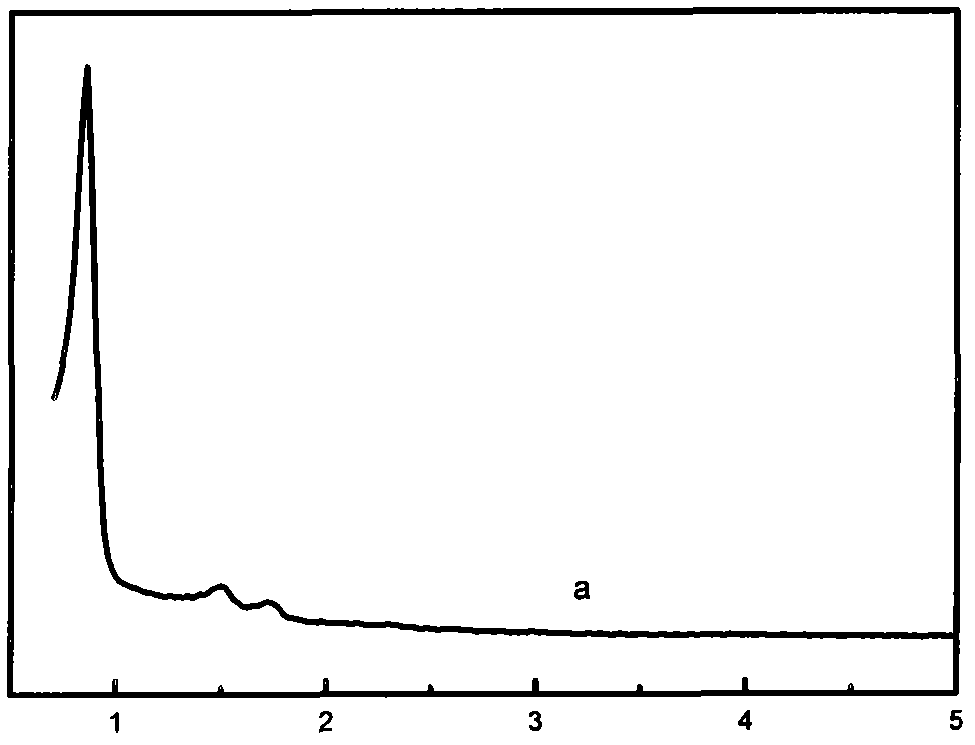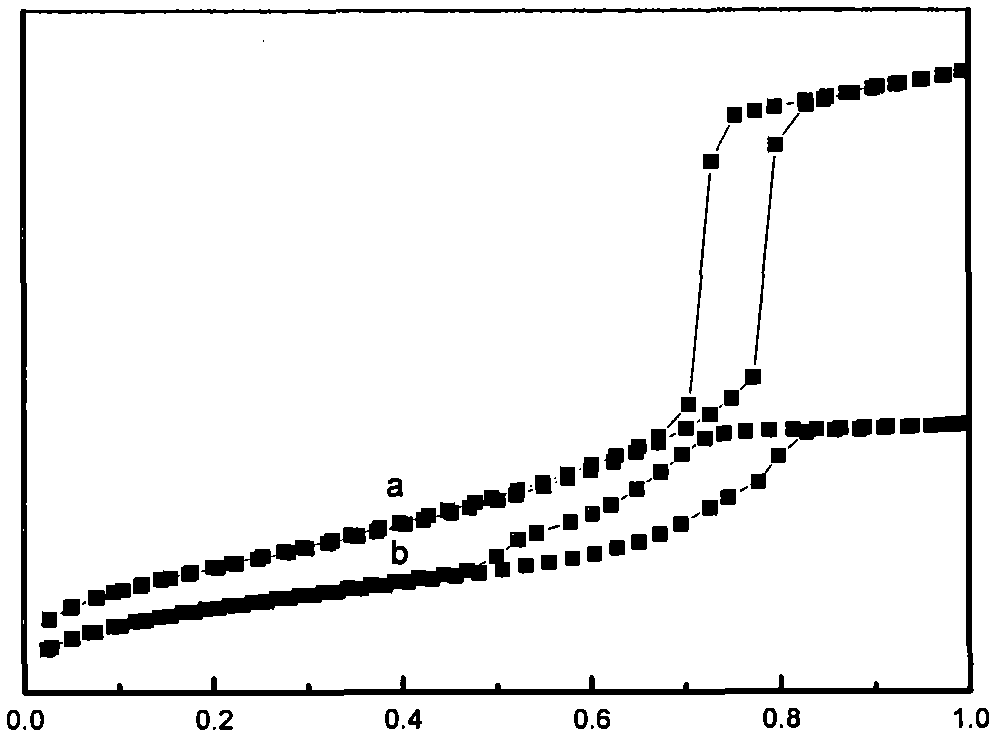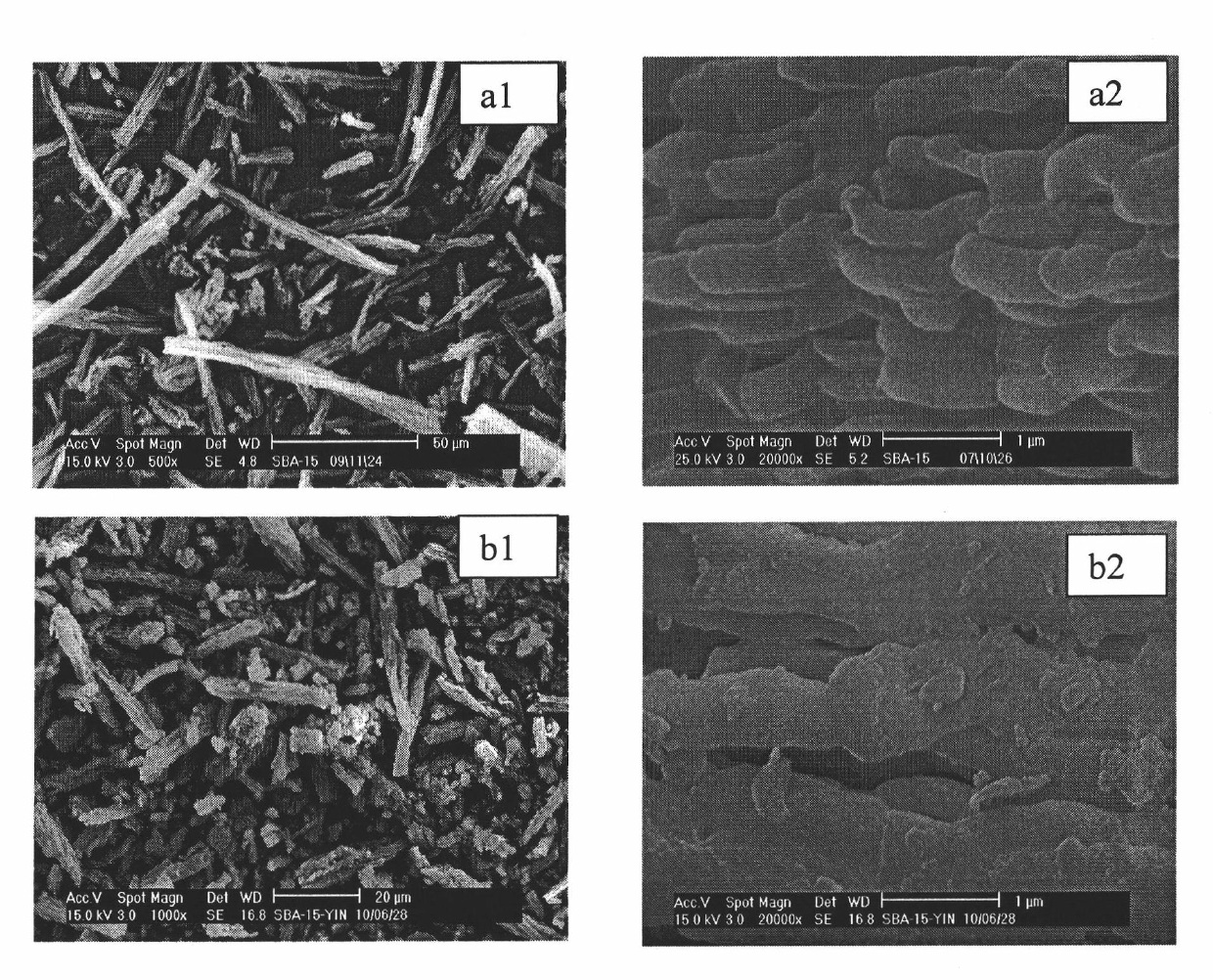Olefin polymerization method
An olefin polymerization and olefin technology, applied in the field of olefin polymerization, can solve the problems of low catalytic efficiency and low efficiency, and achieve the effects of high catalytic activity, stable structure and high catalytic activity
- Summary
- Abstract
- Description
- Claims
- Application Information
AI Technical Summary
Problems solved by technology
Method used
Image
Examples
preparation example Construction
[0039] The method for preparing the above-mentioned supported metallocene catalyst of the present invention further comprises heating the carrier at a temperature of 300-500°C for 5-20 hours under the protection of an inert gas before loading methylaluminoxane .
[0040] The method for preparing the above-mentioned supported metallocene catalyst of the present invention, for example: may comprise the following steps:
[0041](1) Thermal activation step, calcining the carrier such as rod-shaped SBA-15 at 300-500° C. for 5-20 hours under the protection of nitrogen to obtain a rod-shaped mesoporous material after thermal activation;
[0042] (2) Transfer the thermally activated carrier to a reactor fully replaced by nitrogen, add toluene, methyl aluminoxane, in molar ratio, carrier (calculated as silicon dioxide): toluene: methyl aluminoxane The molar ratio of alkanes is 1:3-10:0.1-1, then stirred at 25-80°C for 1-10 hours, after the completion, washed twice with hexane, and fin...
Embodiment 1
[0054] This example is used to illustrate the supported metallocene catalyst and its preparation method according to the present invention.
[0055] 1) The rod-shaped mesoporous material SBA-15 (commercially purchased from Changchun Jilin University High-tech Co., Ltd., the length of the rod is 30-100 microns, and its pore structure parameters are shown in Table 1) was calcined at 400 ° C for 10 hour (thermal activation), remove hydroxyl group and residual moisture, obtain the rod-shaped mesoporous material after thermal activation;
[0056] 2) Transfer 0.4 g of the thermally activated rod-shaped mesoporous material to a 250 ml glass reactor fully replaced by nitrogen, add 10 ml of refined toluene, methyl aluminoxane (MAO, commercially available from Albemarle, USA) 0.47 g of auxiliary agent was stirred at 50° C. for 4 hours. After completion, wash three times with 20 ml of hexane, and finally dry the solid with nitrogen to obtain an alkylaluminoxane / SBA-15 complex carrier (M...
experiment Embodiment 1
[0066] This experimental example is used to illustrate the catalytic activity of the supported catalyst according to the present invention.
[0067] In a 2-liter stainless steel autoclave, replace three times with nitrogen and ethylene respectively, then add 200 milliliters of hexane solvent, raise the temperature of the kettle to 80 ° C, then add the remaining 800 milliliters of hexane solvent, with the addition of hexane, Add 2 ml of 1 mol / L triethylaluminum (TEA) hexane solution, then add 61.7 mg of SBA-15-YIN-1, feed ethylene to raise and maintain the pressure to 1.0 MPa, and react at 70°C for 1 hour . After the end of the polymerization reaction, the polyethylene particle powder was collected and weighed to obtain 68 grams. The efficiency of the catalyst was 1102gPE / (gcat h) (that is, 2.0×10 7 gPE / (mol Zr h)), bulk density (BD) is 0.285g / ml, melt index: MI 2.16 = 0.0001 g / 10 min.
PUM
| Property | Measurement | Unit |
|---|---|---|
| Bulk density | aaaaa | aaaaa |
| Melt index | aaaaa | aaaaa |
| Bulk density | aaaaa | aaaaa |
Abstract
Description
Claims
Application Information
 Login to View More
Login to View More - R&D
- Intellectual Property
- Life Sciences
- Materials
- Tech Scout
- Unparalleled Data Quality
- Higher Quality Content
- 60% Fewer Hallucinations
Browse by: Latest US Patents, China's latest patents, Technical Efficacy Thesaurus, Application Domain, Technology Topic, Popular Technical Reports.
© 2025 PatSnap. All rights reserved.Legal|Privacy policy|Modern Slavery Act Transparency Statement|Sitemap|About US| Contact US: help@patsnap.com



